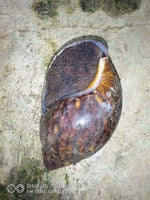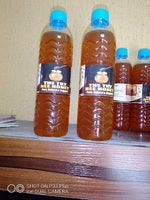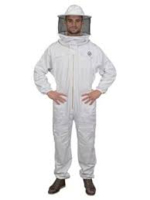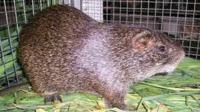Post by Ismail AbdulAzeez on Jun 27, 2017 16:38:27 GMT 1
Environmental Requirements
The - environmental requirements by rabbits depend essentially on the intensity of production, specific demands on shed and climate include the following:
Temperature
Due to their natural geographical distribution, rabbits have a relatively broad range of tolerance to temperature.
High temperatures (above 30°C) have a negative effect on fertility (diminish sperm quality, increase early embryonic mortality; daily feed intake and thus daily weight gain.
Air Quality
The rabbit is much more sensitive to air quality (relative humidity, concentrations of noxious gases and movement of air) than to temperatures.
Light
With decreasing daylight in rainy and harmattan, the rates of conception as well as the libido are diminished. For a continual production of young throughout the year, a constant duration of light from 12-16 hours per day is recommended.
The Shed
The rabbit shed must primarily fulfill the following functions.
Protection from extreme influences, which would interfere with the performance or comfort of the animals (weather, sun, noise e.t.c.)
1. Protection from natural enemies (predators, snakes, insects) and thieves.
2. The length of the shed must be easily expandable, to allow for an increase in capacity when desired.
3. In temperate zones, the exterior building elements should provide good heat insulation.
4. In tropical and subtropical climates an adequate protection against heat (reflecting roof, e.t.c) is important.
Cage Forms
1. The construction of rabbit cages is mainly determined by (i) the shed type (ii) the production method and (iii) the degree of mechanization.
2. For housing under simple roofs, the cage must offer the animals additional protection against inclement weather and natural enemies (e.g. by suspension). This is not necessary for housing in closed buildings.
3.It is essential to choose a cage material with a high resistance to gnawing. From this point of view, the following materials are practical:
i. galvanized wire mesh and tin
ii. Concrete or masonry,
iii. asbestos - cement slabs
iv. wooden boards
v. bamboo and others
4. Basically, one must decide between single and group holding. Breeding does, adult bucks .(for danger of biting each other) it should always be kept in single cages if possible.
5. Young animals for rearing and fattening may be held in, groups.
6. In building cages for bucks, no sight or physical contact should exist with neighboring cages. This avoids the soiling of each other with urine.
7. Round cages for bucks facilitate the act of mounting in natural mating.
Housing With Bedding
1.Here the floor is a solid surface, which should be water-tight for a period of several days.
2. Building materials are wood, plastic of asbestos and cement slabs.
3. Fibrous vegetable matter (straw, wood, chips, leaves e.t.c) are suitable for bedding, provided they are dry and absorbent.
4. It is important that the, animals always have dry bedding. This is made possible by frequent removal of droppings, often- through a flap in the back wail.
5.By spreading a new layer of bedding daily, the increasing deep litter need only be removed every few weeks:
6.An additional advantage of deep litter is that a nesting box is unnecessary. The doe builds her nest in the bedding in a shielded dark corner of the cage.
7. One disadvantage of deep litter, however, is the insect problem, which occurs especially at high temperatures. An additional advantage of deep litter is that a nesting box is unnecessary. The doe builds her nest in the bedding in a shielded dark corner of the cage.
Shed Management
1.A nesting box is necessary for the rearing of young rabbits up to the 4th week of life, unless bedding is provided. A high percentage of losses in young animals in the first days of life is due to under cooling.
2. When shed temperatures are below 20°c heat loss can be avoided if at least the floor of the nesting box is of a material such as Styrofoam, wood, plywood, e.t.c.
3. A depression in the middle of the nesting box floor keeps the young animals together in the nest.
The - environmental requirements by rabbits depend essentially on the intensity of production, specific demands on shed and climate include the following:
Temperature
Due to their natural geographical distribution, rabbits have a relatively broad range of tolerance to temperature.
High temperatures (above 30°C) have a negative effect on fertility (diminish sperm quality, increase early embryonic mortality; daily feed intake and thus daily weight gain.
Air Quality
The rabbit is much more sensitive to air quality (relative humidity, concentrations of noxious gases and movement of air) than to temperatures.
Light
With decreasing daylight in rainy and harmattan, the rates of conception as well as the libido are diminished. For a continual production of young throughout the year, a constant duration of light from 12-16 hours per day is recommended.
The Shed
The rabbit shed must primarily fulfill the following functions.
Protection from extreme influences, which would interfere with the performance or comfort of the animals (weather, sun, noise e.t.c.)
1. Protection from natural enemies (predators, snakes, insects) and thieves.
2. The length of the shed must be easily expandable, to allow for an increase in capacity when desired.
3. In temperate zones, the exterior building elements should provide good heat insulation.
4. In tropical and subtropical climates an adequate protection against heat (reflecting roof, e.t.c) is important.
Cage Forms
1. The construction of rabbit cages is mainly determined by (i) the shed type (ii) the production method and (iii) the degree of mechanization.
2. For housing under simple roofs, the cage must offer the animals additional protection against inclement weather and natural enemies (e.g. by suspension). This is not necessary for housing in closed buildings.
3.It is essential to choose a cage material with a high resistance to gnawing. From this point of view, the following materials are practical:
i. galvanized wire mesh and tin
ii. Concrete or masonry,
iii. asbestos - cement slabs
iv. wooden boards
v. bamboo and others
4. Basically, one must decide between single and group holding. Breeding does, adult bucks .(for danger of biting each other) it should always be kept in single cages if possible.
5. Young animals for rearing and fattening may be held in, groups.
6. In building cages for bucks, no sight or physical contact should exist with neighboring cages. This avoids the soiling of each other with urine.
7. Round cages for bucks facilitate the act of mounting in natural mating.
Housing With Bedding
1.Here the floor is a solid surface, which should be water-tight for a period of several days.
2. Building materials are wood, plastic of asbestos and cement slabs.
3. Fibrous vegetable matter (straw, wood, chips, leaves e.t.c) are suitable for bedding, provided they are dry and absorbent.
4. It is important that the, animals always have dry bedding. This is made possible by frequent removal of droppings, often- through a flap in the back wail.
5.By spreading a new layer of bedding daily, the increasing deep litter need only be removed every few weeks:
6.An additional advantage of deep litter is that a nesting box is unnecessary. The doe builds her nest in the bedding in a shielded dark corner of the cage.
7. One disadvantage of deep litter, however, is the insect problem, which occurs especially at high temperatures. An additional advantage of deep litter is that a nesting box is unnecessary. The doe builds her nest in the bedding in a shielded dark corner of the cage.
Shed Management
1.A nesting box is necessary for the rearing of young rabbits up to the 4th week of life, unless bedding is provided. A high percentage of losses in young animals in the first days of life is due to under cooling.
2. When shed temperatures are below 20°c heat loss can be avoided if at least the floor of the nesting box is of a material such as Styrofoam, wood, plywood, e.t.c.
3. A depression in the middle of the nesting box floor keeps the young animals together in the nest.












